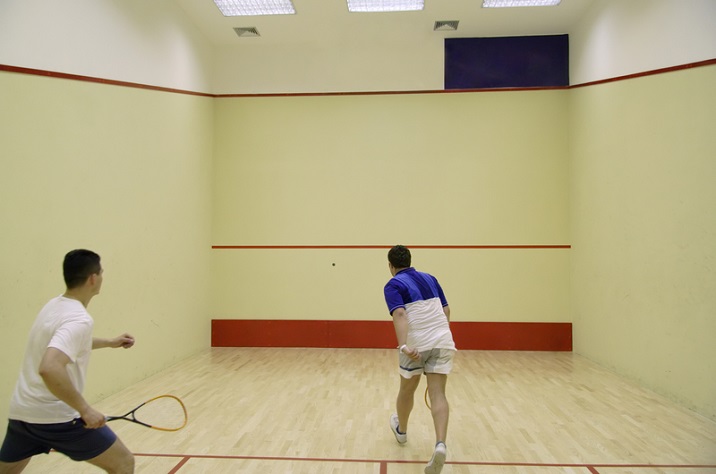
Racquetball - Rules
As the match is played in an enclosed court, so players occupying each others place during the match is a very common thing. By occupying the opponents place, players sometimes block their opponents ability to hit the ball perfectly or break the flow. These kind of occurrence are called hinders or penalty hinders.
A hinder results in restarting the rally whereas in case of a penalty hinder, point is given to the opponent. A penalty hinder happens when a player causes an avoidable obstruction that results in losing the rally. Here a player misses out a clear opportunity of scoring a point because of the obstruction of the opponent.

If a player doesnt move sufficiently or allow his opponent to play a shot on the front wall or pushes his opponent during playing a shot, it results in penalty hinder. Even if the player blocks the line of vision of the opponent before the opponent strikes the ball or deliberately try to disrupt the opponent by shouting or waving rackets or any kind of disturbing behaviors, it results in a penalty hinder.
The server has to make sure that the ball is dry before the serve. If during the rally the ball found out to be wet, it results in a penalty hinder to the server. If a player loses any of his equipment or apparel during the play, he can ask for a penalty hinder against the opponent.
If without the obstruction wouldnt have led the player play a winning shot, it is considered as a hinder. If the opponent is unable to avoid being touch by the ball or the player touches the opponent while trying to hit the ball, it is considered as a hinder.
There is a type of hinder called Court Hinder where the ball takes an unexpected bounce because of getting hit by flawed floors or door frames and results in replay of the rally. The referee decides the difference between the hinder and penalty hinder.
There are some cases where the interruption is considered as a hinder and the rally is restarted without scores given to anyone. Sometimes the striker refrains from hitting the ball because of the reasonable fear of injuring the opponent. He can immediately stop playing and request for a hinder. Similarly, if the receiver is not ready to play and doesnt even attempt to take the service, it results in a hinder and the rally restarts again.